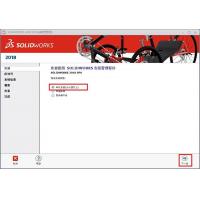 solidworks2018 中文版¥0
solidworks2018 中文版¥0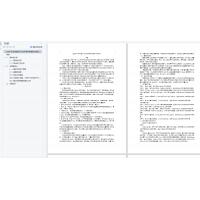 CA6140车床拨叉831006零件夹具设计说明书——9页...¥0
CA6140车床拨叉831006零件夹具设计说明书——9页...¥0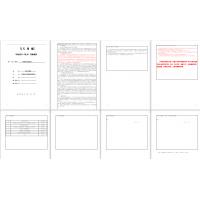 机械设计制造及其自动化毕业设计(论文)开题报告...¥0
机械设计制造及其自动化毕业设计(论文)开题报告...¥0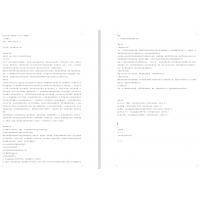 XX大学理工类毕业设计(论文)开题报告——自行车配件管理系统...¥0
XX大学理工类毕业设计(论文)开题报告——自行车配件管理系统...¥0 课程设计 CA6140车床拨叉831002的加工工艺及钻φ25孔的钻床...¥0
课程设计 CA6140车床拨叉831002的加工工艺及钻φ25孔的钻床...¥0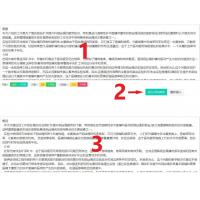 毕业设计辅助工具_免费在线论文文案文章修改神器_毕业设计辅助软件_AI...¥0
毕业设计辅助工具_免费在线论文文案文章修改神器_毕业设计辅助软件_AI...¥0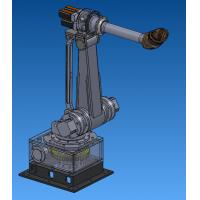 六自由度工业机器人设计【说明书(论文)+CAD图纸+SolidWork...¥46.00
六自由度工业机器人设计【说明书(论文)+CAD图纸+SolidWork...¥46.00 补价¥1.00
补价¥1.00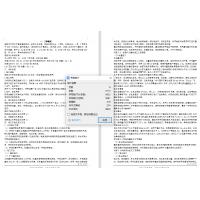 陈家沟桥梁施工组织设计方案.doc...¥0
陈家沟桥梁施工组织设计方案.doc...¥0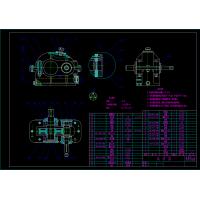 一级减速器成套CAD图【22CAD】...¥37.00
一级减速器成套CAD图【22CAD】...¥37.00XX时尚广场空调系统设计(论文+17份CAD图……)
摘 要
本设计为XX时尚广场空调系统设计,该广场共四层,是一栋商场建筑。本空调属于舒适性空调,主要为满足全年工作和生活对空气质量舒适度的要求。设计中采用集中式空调系统的空调方式。
在设计中,通过查阅大量相关文献和设计规范,对设计中的部分未知参数进行了假定,并确定了室外计算参数和室内设计参数;完成了空调房间的冷、热、湿负荷和新风负荷的计算;根据空调房间的使用性质和大小,结合各种空调方式的优缺点,采用了全空气系统的空气调节方式;根据房间构造的不同采用了散流器下送的送风方式,并对空调房间的气流组织进行了设计和校核;进行了冷冻水和冷却水系统设计;利用假定流速法确定了风管和水管的尺寸,并进行了水力计算;进行了制冷机房设计;根据样本,先后选择了空气处理机组、循环水泵、冷水机组、热泵机组等制冷空调设备;最后进行了管道保温和空调系统消声减振设计。
关键词:空气调节;全空气系统;制冷机;循环水泵
Abstract
The design is a air-conditioning system design of a business building of Linxian, which is a Fashion Square of “Hengyuan”, including four layers. The air conditioning is air-conditioned of comfort, main to meet the annual work and life on the comfort of air quality requirement. In the design, I used the central air-conditioning system.
In the design, I assumpted some unknown parameters of the design and determined the calculation parameters outdoor and design parameters indoor by inspecting at the large number of relevant documents and design specifications. I completed the calculation of the air-conditioned room’s cold, hot, wet load and the new wind load. According to the nature of the use and the size of air-conditioned rooms and combining the advantages and disadvantages of various air-conditioning mode, I adopted the way of air-conditioning, which is the entire air system. I used a air supply way of underfloor air supply by diffuser according to the room structure, and designed and vivificated air distribution of the air-conditioned room. I designed Chilled Water System and Cooling Water System. I determined the size of the wind pipe and water mains by the method of assumption velocity and hydraulic calculation.I designed refrigeration room and Selected refrigeration and air conditioning systems including air handling unit, circulating pump, chiller,heat exchanger, Heat pump unit and so on. At the last, I designed insulated pipeline,noise elimination and vibration reduction of air-conditioning system.
Keywords: air-conditioning; entire air system; refrigeration room; water circulating pump
目 录
2.1 设计依据 2
2.2 设计参数 2
2.2.1 室外计算参数 2
2.2.2 室内计算参数 3
2.2.3 室内基础数据 3
2.3 建筑围护结构热工参数 3
3.1 设计负荷计算原理 5
3.2 冷负荷计算过程 5
3.2.1 外墙和传热冷负荷的计算 6
3.2.2 外窗和传热冷负荷的计算 6
3.2.3 外窗太阳辐射冷负荷 6
3.2.4 内围护结构的传热冷负荷 7
3.2.5 人体散热形成的冷负荷 7
3.2.6 灯光、设备冷负荷 7
3.2.7 新风冷负荷计算 8
3.3 热负荷计算 8
3.3.1 通过围护结构传热形成的热负荷 9
3.3.2 新风热负荷 9
3.4 湿负荷计算 9
3.5 负荷计算结果 10
4.1 空调系统设计的基本原则 11
4.2 空调系统的分类及方案比较 11
4.3 空调系统方案的确定 13
4.3.1 空调系统划分的原则 13
4.3.2 空调系统方案 14
4.4 冷热源形式的比较选择 14
5.1 送风量的确定 15
5.2 新风量的确定 17
5.3 回风量、排风量的确定 17
6.1 气流组织的意义 18
6.2 送风形式的选择 18
6.3 回风、排风形式的选择 18
6.4 典型空间的气流组织 19
6.4.1 散流器送风气流组织计算 19
6.4.2 回风口设计 20
7.1 风管管径的确定 22
7.2 风管最不利点压力损失计算 23
7.3 水系统设计 26
7.3.1 冷冻水系统 27
7.3.2 管道管径计算 28
7.3.3 冷冻水管道水力计算 29
7.3.4 水系统的水力计算方法。 29
7.3.5 管径的确定 30
7.3.6 水的流动阻力的确定 30
8.1 制冷机房的位置选择 33
8.2 制冷方式确定 33
8.3 冷水机组的选择 33
8.3.1 冷水机组的装机容量 34
8.3.2 冷水机组的台数 34
8.3.3 冷水机组的类型 34
8.4 冷却塔的选择 35
8.5 水泵的选择 36
8.5.1 冷冻水泵的选择 36
8.5.2 冷却水泵的选择 36
8.6 换热器的选择 37
8.7 热水泵的选择 37
8.8 补水定压装置的选择 38
8.8.1 膨胀水箱的选择 38
8.9 水处理设备的选择 39
8.9.1 软水器和软化水箱 39
8.9.2 除污器和水过滤器 39
8.10 排气阀 40
9.1 空调系统的防腐 41
9.2 空调系统的保温保冷 41
9.2.1 空调系统保温保冷设计的目的 41
9.2.2 冷冻水管的保温设计 41
10.1 空调系统的消声 43
10.1.1 空调系统噪声源 43
10.1.2 空调系统的消声设计 43
